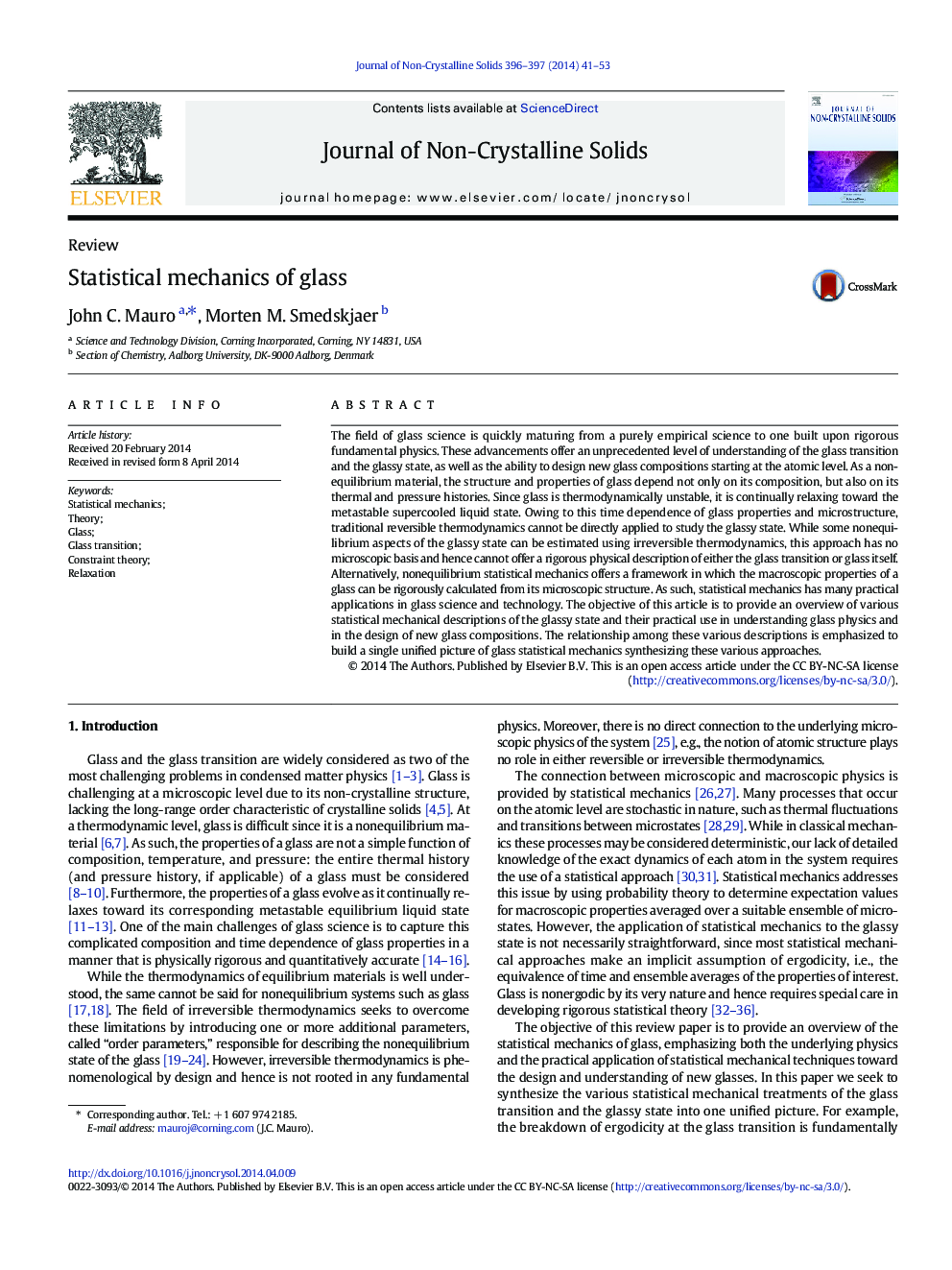| Article ID | Journal | Published Year | Pages | File Type |
|---|---|---|---|---|
| 7902163 | Journal of Non-Crystalline Solids | 2014 | 13 Pages |
Abstract
The field of glass science is quickly maturing from a purely empirical science to one built upon rigorous fundamental physics. These advancements offer an unprecedented level of understanding of the glass transition and the glassy state, as well as the ability to design new glass compositions starting at the atomic level. As a nonequilibrium material, the structure and properties of glass depend not only on its composition, but also on its thermal and pressure histories. Since glass is thermodynamically unstable, it is continually relaxing toward the metastable supercooled liquid state. Owing to this time dependence of glass properties and microstructure, traditional reversible thermodynamics cannot be directly applied to study the glassy state. While some nonequilibrium aspects of the glassy state can be estimated using irreversible thermodynamics, this approach has no microscopic basis and hence cannot offer a rigorous physical description of either the glass transition or glass itself. Alternatively, nonequilibrium statistical mechanics offers a framework in which the macroscopic properties of a glass can be rigorously calculated from its microscopic structure. As such, statistical mechanics has many practical applications in glass science and technology. The objective of this article is to provide an overview of various statistical mechanical descriptions of the glassy state and their practical use in understanding glass physics and in the design of new glass compositions. The relationship among these various descriptions is emphasized to build a single unified picture of glass statistical mechanics synthesizing these various approaches.
Related Topics
Physical Sciences and Engineering
Materials Science
Ceramics and Composites
Authors
John C. Mauro, Morten M. Smedskjaer,
